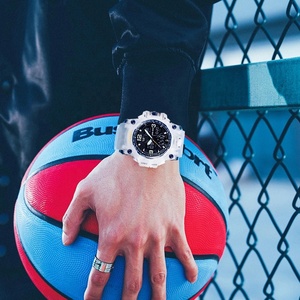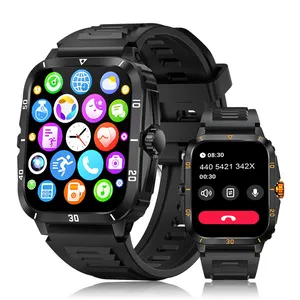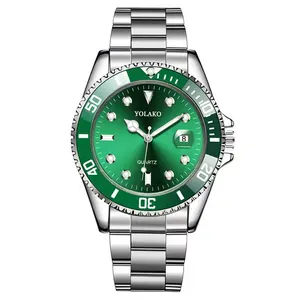Within the realm of timekeeping and fitness, sports watches have emerged as an indispensable tool for athletes and enthusiasts alike. These devices are not just about telling time but have evolved into sophisticated gadgets that cater to a myriad of activities and requirements. A sports watch is a combination of durability, functionality, and style, designed to withstand the rigors of physical activities while providing useful data to enhance performance.
Types and Varieties of Sports Watches
The sports watches category encompasses a range of types, each tailored to specific activities and preferences. For instance, the Seiko 5 Sports series is renowned for its automatic movement and robustness, suitable for everyday athletes. On the other hand, specialized watches like the Garmin Golf Watch are designed with golfers in mind, providing course maps and yardage. Diving watches offer water resistance and pressure endurance, essential for underwater activities. Watches like the Tag Heuer Formula 1 are built for racing enthusiasts, featuring chronographs for lap timing. Each type presents unique characteristics, from the Seiko GMT function for travelers to the Garmin Vivomove Sport for those seeking a blend of style and fitness tracking.
Structure and Operation of Sports Watches
The structure of a sports watch is a marvel of modern engineering. The case houses the movement, which can range from quartz in models like the Casio Men's Watches to the intricate mechanical movements found in Seiko Automatic 5 watches. The digital movement in a running watch translates physical movements into digital data. The bezel, which can be found in diving watches, rotates to help divers track their underwater time. The pushers and crowns allow for interaction with the watch's functions, such as setting the time or using the stopwatch in a fast track watch for men.
Materials and Their Properties in Sports Watches
The choice of materials in sports watches is deliberate, aimed at providing durability and comfort. Stainless steel is favored for its corrosion resistance and strength, ideal for the bands of men's G Shock watches. Rubber and PU are chosen for their flexibility and resistance to wear, often used in the bands of running watches. The cases are constructed from robust materials like ABS and steel to protect against shocks. Dial windows are made from hardlex or sapphire crystal, selected for their clarity and scratch resistance. These materials are chosen not only for their physical properties but also for their ability to withstand the conditions of specific sports or activities.
Business Usages and Applications of Sports Watches
Sports watches have found their place in various business settings, from professional sports training facilities to corporate wellness programs. In the fitness industry, watches like the Seiko 5 Sports Automatic are used to track athletes' performance and recovery. In corporate environments, devices such as the Garmin Vivomove Sport are integrated into health initiatives to encourage employee wellness. The precision of a golf watch is leveraged by golf course managers to enhance the playing experience for clients. These watches create business value by improving performance metrics, fostering health and wellness, and enhancing customer engagement in sports-related enterprises.
Functions and Tasks of Sports Watches
The primary function of a sports watch is to keep time, but modern iterations are designed to do much more. They serve as pedometers, heart rate monitors, and sleep trackers, providing a holistic view of the wearer's health. For instance, a running watch may include GPS tracking to help runners map their routes and track distances. A golf watch might offer functions to measure shot distances and track scores. These tasks are designed to support the user in their specific sports or fitness goals.
Features and Unique Selling Points
Each sports watch comes with a set of features that distinguish it from competitors. The Seiko 5 GMT offers a dual-time display, essential for travelers. The fast track watch for women might boast a sleek design with fitness tracking capabilities, appealing to style-conscious fitness enthusiasts. The unique selling points of these watches, such as the durability of men's G Shock watches or the specialized golfing functions of a Garmin golf watch, set them apart in a crowded market.
Benefits and Positive Outcomes
The benefits of owning a sports watch are manifold. They provide convenience by consolidating multiple devices into one wearable gadget. For example, the Seiko 5 Sports Automatic eliminates the need for manual winding, while the health tracking features of a Garmin Vivomove Sport can lead to better health outcomes. The ruggedness of a diving watch provides peace of mind for divers, knowing their watch can withstand the pressures of deep-sea exploration.
How to Use and Operate Sports Watches Effectively
Operating a sports watch effectively involves understanding its functions and settings. For instance, setting up the Seiko GMT function requires knowledge of time zones. Users should familiarize themselves with the interface, whether it's the touchscreen of a Garmin golf watch or the buttons on a Casio men's watch. Regular syncing with smartphone apps can ensure the data collected is up to date and accurate.
Choosing, Cleaning, and Maintaining Your Sports Watch
Selecting the right sports watch depends on the user's specific needs. A diving watch should have the appropriate water resistance, while a running watch should have a reliable GPS. Cleaning involves wiping the band and case with a soft cloth, and maintenance might include battery replacement or software updates. For mechanical watches like the Seiko 5 Sports Automatic, professional servicing is recommended to ensure longevity.
Target Audience and Meeting Their Needs
The target audience for sports watches is as varied as the watches themselves. The Seiko 5 Sports might appeal to those who appreciate mechanical movements, while the Garmin Vivomove Sport is aimed at those who want a stylish fitness tracker. Understanding the needs and preferences of these audiences is key to providing them with a watch that fits their lifestyle and enhances their sporting activities.
What are the benefits of integrating sports watches into daily fitness routines?
Integrating a sports watch into daily fitness routines offers numerous benefits. It allows for precise tracking of physical activities, monitoring of vital health metrics, and setting and achieving fitness goals. The convenience of having a personal fitness tracker on the wrist encourages consistency and motivation in maintaining an active lifestyle.
How do sports watches enhance athletic performance?
Sports watches enhance athletic performance by providing athletes with detailed data about their workouts, which can be used to fine-tune training regimens. Features like GPS tracking, pace monitoring, and altitude measurement are invaluable for athletes looking to push their limits and track their progress over time.
Are sports watches suitable for professional training?
Yes, sports watches are not only suitable but often essential for professional training. They offer precision and a range of functionalities that can be tailored to the specific demands of various sports. Professional trainers and athletes rely on these devices for accurate performance data, which is critical in high-stakes environments where every second counts.













































 浙公网安备 33010002000092号
浙公网安备 33010002000092号 浙B2-20120091-4
浙B2-20120091-4